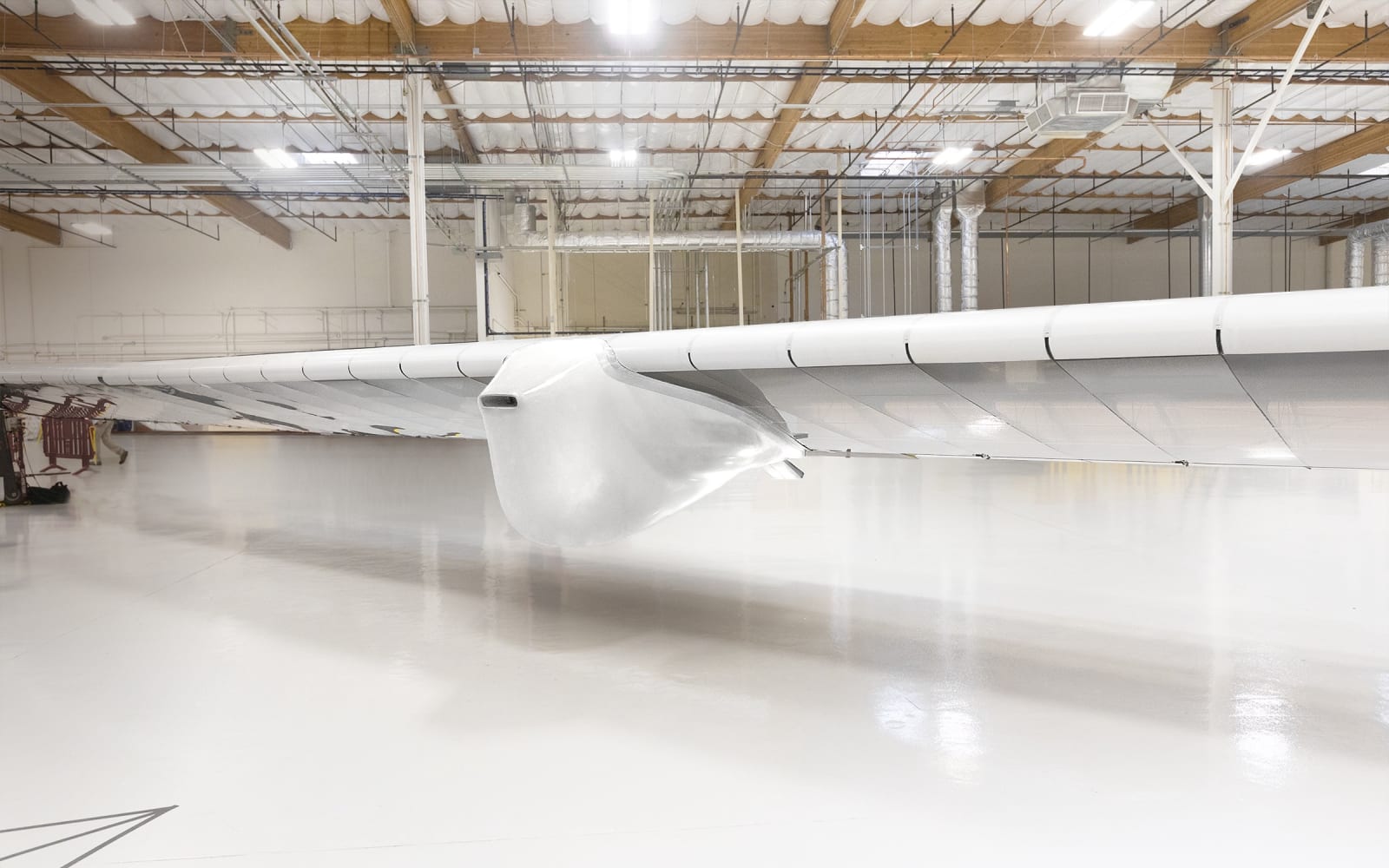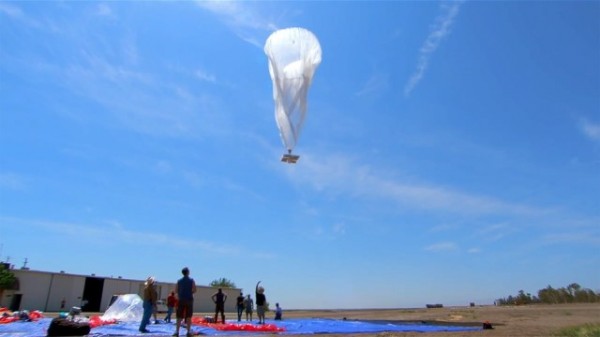Tag Archives: Project Loon
Alphabet’s Loon and AT&T will tackle global crises with internet balloons
Alphabet’s Loon turned a stratospheric aircraft into an internet drone
 Alphabet's Loon is known for its internet balloons, but it worked on an entirely balloon-less project as part of its partnership with Softbank's HAPSMobile. The two formed "a long-term strategic relationship" in April 2019, with HAPSMobile investing...
Alphabet's Loon is known for its internet balloons, but it worked on an entirely balloon-less project as part of its partnership with Softbank's HAPSMobile. The two formed "a long-term strategic relationship" in April 2019, with HAPSMobile investing...
Google Finishing Project Loon
Google’s Project Loon for Internet everywhere will begin in Australia

Google’s most ambitious idea yet, Project Loon, will begin in December this year with Australia as the first country partaking.
Project Loon is Google’s greatest endeavor yet, as it aims to bring Internet to the entire world via a series of relays located in high-altitude balloons. The Santa Clara company has announced that they are getting ready to conduct a series of test flights in Australia, with more than 20 balloons spread around western Queensland. Google couldn’t do this on their own, so they have partnered with a local wireless carrier, Telstra, who will be in charge of beaming the Internet to the ground below. Note, Telstra are not newbies when it comes to Internet telecommunications, and are already Australia’s largest carrier.
The plan comes from Google’s experimentation and research department, Google X, and has already been running trials in other countries, such as New Zealand and the US. Project Loon sounds fantastic on paper, but Google still has to get around some details, mainly the wind and ever-changing weather conditions which could potentially interfere with the optimal altitude, or worse, crash the balloons as it already happened in New Zealand once.
Via The Verge
Be social! Follow Walyou on Facebook and Twitter, and read more related stories at Google’s Acquisition Spree Reaches into Space and Google wants you to be online: Project Loon brings internet everywhere.
Google wants you to be online: Project Loon brings internet everywhere

If we say that Google is experimenting with balloons, readers would think of it as a ludic activity, but it turns out it’s one of Google’s most altruistic endeavors yet.
So, what is Google’s Project Loon, and why does it matter? Well, it’s just basically Google trying to get internet everywhere in the globe. Literally everywhere.
There is a city in Brazil called Campo Maior, which has restricted Internet access because of its remote location and lack of infrastructure. We’re talking “try to climb up on a tree to see if your cellphone works” issues. Yet, a few days ago, Campo Maior’s was one of the first beneficiaries of Google’s Project Loon, that is, they had internet beamed directly to them from a balloon relay. No cables, no optic fibers, just a high-elevation Wi-Fi balloons.
The California company had set their goals high: to bring Internet to every corner of the Earth, and now after a full year of work, we begin to see the first results of such an endeavor. As the Google team explained in the Project Loon Google+ page, there are lots of factors to take into account, and different weather conditions all across the Earth, but if those kinks got ironed, they’d be able to “provide Internet signal directly to mobile phones, opening up more options for bringing Internet access to more places.”
One of their first balloons, the Ibis-167, went around the world in just 22 days, and there are already more on the way which are supposed to stand on air for over 100 days at a time. This would extend to provide up to 4G services for phone devices, too, which we’re sure many countries would benefit from.
Head of Google X Astro Teller has voices his hope that the company would soon be able to move beyond their test phase, and bring Internet to the masses. We, for one, can’t wait.
Source: CNET
Be social! Follow Walyou on Facebook and Twitter, and read more related stories at Google’s Acquisition Spree Reaches into Space and Google Is Rumoredly Planning to Launch Android TV at I/O This June.
Google’s Acquisition Spree Reaches into Space

Google is often compared to the apocalyptic AI Skynet, but a new acquisition has brought it the closest yet to the oft referenced fictional doomsday computer.
It’s official, Google’s on a buying spree. The most recent–although still pending regulatory approval–is for the satellite company Skybox Imaging. The $500 million acquisition marks the 154th acquisition since Google’s inception in 1998 and the 27th acquisition in the last 12 months (that’s an average of more than 2 acquisitions per month for those of us that are counting).
Skybox marks another new territory in the ever growing company, but fits right in with Google’s stable of acquisitions that are assumed to be leveraged in the execution of Project Loon, Google’s initiative to provide internet access to hard to reach–or disaster areas–via weather balloon.
Other project loon acquisitions include Titan Aerospace, which designs and produces high altitude UAVs, which–combined with a company like Skybox Imaging–means Google now owns several layers of the air and sky. You could even say it creates a sort of net in the sky, like some sort of… Skynet.
Although Google may intend to use the satellites produced by the now-Google-owned Skybox to beam out internet connections, pre-acquisition Skybox Imaging leveraged its satellites to capture high resolution images and videos of changes to the surface of the earth. You can see a sample of the work done by Skybox Imaging in the video below (note that as Skybox imaging captures in HD, the video below does support 1080p playback).
Although much of this is new territory for Google, the video above may remind you of many existing Google services. Imagine if Google leveraged these satellites to augment Google maps, including real time traffic and weather updates. Some of this is already handled by other Google acquisitions like Waze, but Waze depends on user gathered data to generate traffic updates. Traffic in the video above is clearly visible, meaning traffic updates such as accidents or traffic jams will be visible by Google as they happen instead of waiting until the effects are felt by another driver running Waze.
Such an addition to Google Maps will help it to jump ahead of competing mapping and navigation solutions by leaps and bounds. It also means the images in Google maps will be far more up to date instead of being updated only every couple of years, so any changes from construction on roads or creation of new landmarks could be immediately noted.
Obviously, Google owned satellites in the sky will definitely raise privacy concerns and bring out even more Skynet jokes (as evidenced by this article), but just like Apple’s TouchID or Google Now, most marginally privacy infringing services also bring major benefits to consumers.
We’ll see how many different ways Google chooses to utilize its new satellites and whether it will just use it for Project Loon’s internet distribution plans, or if it will branch out and incorporate the technology with the many other existing Google services, but either way, the sky is literally not even the limit.
Source: Engadget
Be social! Follow Walyou on Facebook and Twitter
Read more on Walyou, Moto X Gets Updates to Hardware, Software, and New Promotion, Google Forms Partnership to Improve Fashion for Google Glass
Google to test Project Loon in California’s Central Valley, begins taking participant applications

It's safe to say Google took the world by surprise when it introduced its Project Loon. But, some were disappointed that it was done so far away from home -- at least at first. Now, the company has announced that it's ready to more openly test out the high-flying internet service in California, with research flights due to take place around The Golden State's Central Valley. Google says it's seeking people in the area "who are willing to have a Loon internet antenna installed on their house or small business building to help test the strength of the Loon internet connection." For those interested in helping out the cause (and why not!), you'll need to fill out the survey located at the source below -- the Project Loon team notes that those selected to participate will be contacted directly.
Filed under: Misc, Internet, Google
Source: Project Loon (Google+)
